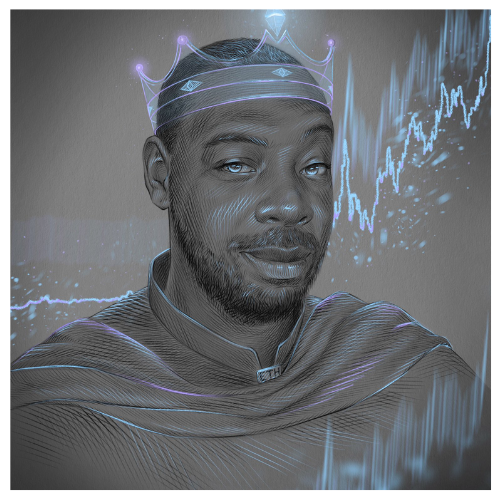The Commodification of Suffering in Art: When Pain Becomes a Product
Introduction: When Pain Becomes a Performance
Greetings Warriors!
Art has always walked hand in hand with human pain. From wars to broken hearts, from slavery to exile, suffering has fueled creativity for centuries. But in today’s commercialized art market, there’s a darker truth we can’t ignore: pain has become a product. Galleries, collectors, and even social media audiences eagerly consume suffering packaged as art. And sometimes, artists themselves are guilty of exaggerating or even fabricating tragedy to cash in on sympathy. I want to be clear — I’m not saying all artists do this. Many create from a place of authenticity. But there’s a dangerous pattern where a few turn trauma into theater for profit.
Jean-Michel Basquiat, Untitled - 1982
BUY MY ART🖤
From Sacred Storytelling to Selling Wounds
In the past, depictions of suffering were sacred acts — memorials, testaments, and healing rituals. Think of ancient cave paintings, religious icons, or even war memorial sculptures. These weren’t commodities; they were vessels of memory and truth. Today, however, we live in an era where everything is up for sale. A painting of a refugee child, a performance about racial trauma, or an installation about domestic abuse can easily be flipped at auction. What was once sacred truth-telling has now been twisted into profitable spectacle.
When Tragedy Becomes Trend
Here’s where it stings: sometimes the tragedies presented in art are not even real. Some artists invent trauma, fabricate stories, or exaggerate experiences to appear more profound, more authentic, more “worthy” of sympathy and sales. Collectors and audiences are drawn to tragedy, and in this economy, heartbreak has a high price tag. It’s one thing to create from real scars; it’s another to sell fake wounds for attention. This is exploitation at its worst — a betrayal of the very power art is supposed to hold.
Exploitation vs. Healing
This isn’t to say that all art about pain is exploitative. Far from it. Artists like Käthe Kollwitz, Goya, or even contemporary voices like Kara Walker use the rawness of tragedy to force society to look at itself. That kind of art heals, provokes, and educates. But when trauma becomes just another trend to chase, the line between honoring suffering and selling it gets blurred. We must learn to question: is this artist creating to shed light, or to cash in?
Who Owns the Right to Represent Pain?
A question worth asking is: who gets to profit from suffering? Can someone outside of a community authentically tell its story? Should a privileged artist sell works about poverty or oppression they never lived through? And when wealthy elites hang “tragic” art in their penthouses, what does that say about the cycle of power? Pain becomes décor, suffering becomes a conversation piece at cocktail parties. That contradiction is chilling — and yet it keeps happening.
BUY MY ART🖤
The Market Loves Misery
The harsh truth is that tragedy sells. Collectors want rawness, galleries want relevance, and museums want pieces that “start a conversation.” Banksy, Ai Weiwei, Picasso — they all turned suffering into powerful commentary, and the market rewarded them. But the system also encourages artists to manufacture pain, because misery has become a brand. And let’s not forget: every time tragedy is sold, someone profits. The question is — who? The community that lived it, or the artist who packaged it?
Jean-Michel Basquiat, Irony Of Negro Policeman - 1981
My Own Experience With This
I’ve witnessed this firsthand. I’ve seen artists spin stories of hardship that never existed, weaving false suffering into their art to gain sympathy and boost sales. That’s the dark side of this industry: suffering gets measured, weighed, and sometimes doubted — as if trauma itself is currency. It’s dehumanizing. It makes you feel like your scars are being audited.
Renaissance Man - Inspired by Leonardo Da Vinci
Conclusion: Honoring Truth, Rejecting Lies
At the end of the day, art and suffering will always be intertwined. That’s natural. Art is supposed to reflect the rawness of life. But we must draw a line between honoring pain and profiting from lies. When artists fabricate tragedies or exploit wounds they never bore, they’re not just misleading buyers — they’re betraying the integrity of art itself. For those of us who’ve truly lived through struggle, that betrayal cuts deep.
The truth is clear: pain can be transformed into beauty, but it must be rooted in honesty. Anything else is just a performance. And in the kingdom I stand for — truth matters more than profit.
BUY MY ART, LOVE YOUR FACES 😏
Drop a comment below:
And if this article hit you right in the soul, do what warriors do—share it, retweet it, spread it. Let’s keep art, passion, and legacy alive.
Stay bold. Stay curious. Stay creating.
theromuluskingdom.com
















